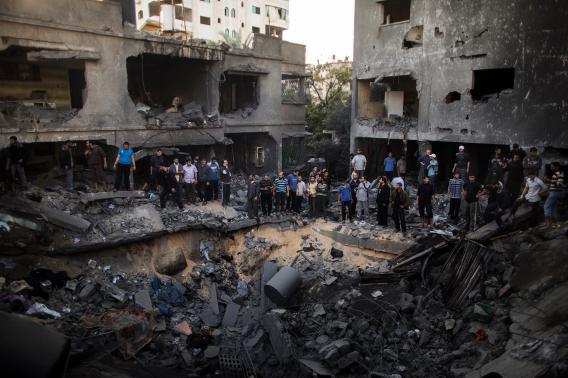Israel and Hamas have been exchanging airstrikes for six days, and a ground invasion by Israeli forces looks increasingly plausible. Thus far, three civilians have been killed in Israel while 102 have been killed in Gaza, including at least 36 militants. The Hamas government blames Israel for provoking the conflict, while Israel blames Hamas. How did Hamas take control of the Gaza Strip?
Through a combination of democracy and violence. Israel won the Gaza Strip during the Six-Day War of 1967, occupying the territory with soldiers and civilians for several decades. In 1993, Israel ceded governmental control of Gaza to the Palestinian Authority as part of the Oslo peace accords. In 2005, Israel withdrew its soldiers from Gaza and mandated that all Israeli settlers evacuate the area. The Palestinian Authority called an election the following year, and Hamas, a radical Islamic organization labeled as a terrorist group by many countries, won a majority of seats in parliament. This success put Hamas’ rival political party, Fatah—which advocates for peaceful dealings with Israel—in a parliamentary minority. It also brought serious sanctions to Gaza by the international community, which strongly preferred Fatah’s control of the region.
In spite of Hamas’ electoral victory, Palestinian Authority President Mahmoud Abbas, leader of Fatah, initially refused to surrender control of the government to his party’s rival. A round of assassinations of members of both parties followed, and soon the violence extended into the streets. One Palestinian rights group estimates that more than 600 Palestinians were killed during the factional fighting. By mid-2007, Hamas had taken complete control over Gaza, successfully beating down Fatah forces and compelling Abbas to relocate to the West Bank.
Having finally seized political power in Gaza, Hamas quickly exerted control over the region’s infrastructure, helping run food banks, schools, and hospitals. This increased Hamas’ popularity among Palestinians and helped to cement the party’s legitimacy as the leader of Gaza. Militants soon began shooting rockets over the border into Israel; Israel responded in late 2008 with massive airstrikes and a bloody ground invasion that led to four Israeli deaths and at least 1,300 Palestinian deaths. The two sides eventually settled upon a cease-fire, but Hamas retained its power.
Reconciliation between Hamas and Fatah, however, appears to be on the horizon. Leaders from both groups have declared a truce in an attempt to show unity in the face of Israel’s current airstrikes, although Hamas will still hold control over Gaza. Hamas and Fatah also agreed to attempt to form a unity government earlier this year. Israel has eyed this prospect with skepticism, considering Hamas’ stated goals of eradicating Israel completely. For now, though, Hamas enjoys total control over Gaza.
